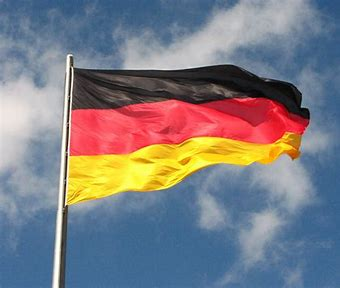The German flag, a tricolore of black, red, and gold, is an image of the nation’s wealthy history, solidarity, and yearnings. Its colors and design hold significant centrality, reflecting the country’s journey from division to reunification and its commitment to democracy and freedom.
The Roots of the German Flag
The beginnings of the German flag can be followed back to the French Insurgency. The tricolore colors of black, red, and gold were initially embraced by the French progressives to represent correspondence, freedom, and society, separately. These colors were afterward received by different German progressive developments and became related with the beliefs of solidarity, flexibility, and democracy.
The Flag During the Napoleonic Wars
During the Napoleonic Wars, the French tricolore was broadly embraced by German states that were partnered with France. This drove to the broad utilisation of the black, red, and gold colors in Germany and set their affiliation with the beliefs of the French Revolution.
The Flag in the 19th Century
In the 19th century, as German patriotism developed, the black, red, and gold flag became progressively related with the crave for German unification. It was received as the flag of the German Confederation, a free organization of German states shaped in 1815. However, the flag was not formally recognized as the national flag of Germany until the unification of the nation in 1871.
The Flag Beneath the Weimar Republic
Following the unification of Germany in 1871, the black, red, and gold flag got to be the official national flag. However, its use was confined amid the Nazi administration, when the swastika flag was received as the national image. After the overcoming of Nazi Germany in World War II, the black, red, and gold flag was reestablished as the national flag of the Federal Republic of Germany.
The Flag After Reunification
The reunification of Germany in 1990 stamped a noteworthy milestone in the country’s history. Following the reunification, the black, red, and gold flag proceeded to be utilized as the national flag of the unified Germany. The flag’s proceeds symbolized the country’s solidarity and its commitment to the standards of democracy and freedom.
The Meaning of the Colors
The colors of the German flag, black, red, and gold, hold significant significance.
Black: Represents the past, the hardships persevered by the German individuals, and the requirement to remember the mistakes of the past.
Red: Represents the show, the blood shed in the battle for opportunity and solidarity, and the country’s continuous commitment to democracy.
Gold: Represents the future, the trust for a better tomorrow, and the country’s yearnings for peace, success, and unity.
The Flag in Modern Culture
The German flag is a prominent image in modern German culture. It is frequently shown on open buildings, at wearing occasions, and amid national occasions. The flag’s use has moreover expanded to the private segment, with numerous businesses and people joining the flag’s colors into their branding and showcasing efforts.
The Flag’s Connection to German Nationalism
The black, red, and gold flag became closely related with German patriotism in the 19th century. It was utilized by different German progressive developments, counting the Burschenschaften, an understudy crew that played a significant part in the German patriot movement.
The flag’s affiliation with German patriotism was fortified amid the Vormärz, a period of political and social distress in Germany earlier to the transformation of 1848. The flag was utilized by different political bunches and organizations to represent their requests for political change and national unification.
The Flag After World War II
Following the defeat of Nazi Germany in World War II, the black, red, and gold flag was restored as the national flag of the Government Republic of Germany. However, the flag’s use was initially confined, as it was related to the Nazi regime.
In 1950, the flag was formally reintroduced as the national flag of West Germany. The flag’s proceeds symbolized the country’s commitment to democracy and opportunity and its want to remove itself from the Nazi past.
The Flag’s Part in German Reunification
The black, red, and gold flag played a critical part in the reunification of Germany in 1990. The hail was utilized by both East and West Germans to symbolize their shared national personality and their crave for a united Germany.
Following the reunification, the flag proceeded to be utilized as the national flag of the unified Germany. The flag’s proceeds symbolized the country’s solidarity and its commitment to the standards of popular government and freedom.
Conclusion
The German flag is an effective image of the nation’s history, solidarity, and goals. Its colors and plan reflect the country’s journey from division to reunification, its commitment to democracy and opportunity, and its trust for a better future.
FAQs
Where did the German flag begin from?
The tricolore colors of black, red, and gold were initially embraced by the French progressives. They were afterward received by different German progressive developments and became related with the standards of solidarity, flexibility, and democracy.
Was the German flag utilized amid the Nazi regime?
No, the German flag was not utilized amid the Nazi administration. The Nazis embraced a diverse hail with a swastika.
When was the German flag restored after World War II?
The black, red, and gold flag was restored as the national flag of Germany in 1950, following the overcoming of Nazi Germany in World War II.
Is the German flag utilized in regular life?
Yes, the German flag is a noticeable image in modern German culture. It is frequently shown on open buildings, at sporting occasions, and amid national holidays.
Can people utilize the German flag for individual purposes?
Yes, people can utilize the German flag for individual purposes, such as enhancing their homes or businesses. However, there are certain controls regarding the utilisation of the flag, particularly in official settings.
To read more, click here
